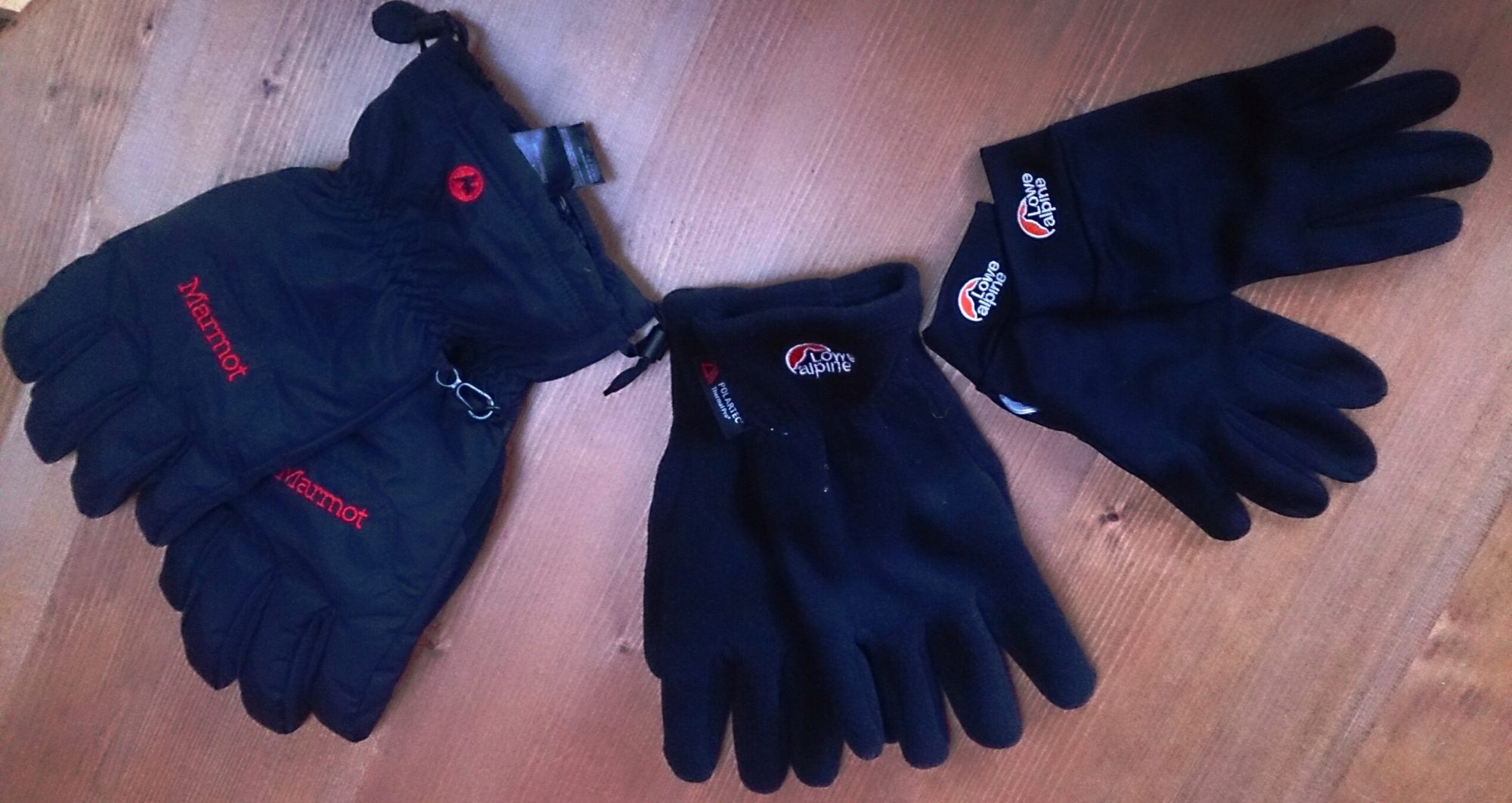Gloves – how to avoid cold hands in the winter mountains

Regular mountain hikers and climbers will know that keeping your hands warm in the colder months is essential.
Cold hands can lead to pain and discomfort, and leave the fingers numb and without feeling. In this state it is difficult to open zips and buckles, or perform the most basic tasks. This is a potentially dangerous situation, especially if trying to navigate with a compass, or open the rucksack to get food or a warm drink. Not addressing the problem can, in the most extreme conditions, lead to frost nip or frostbite and permanent tissue damage.
Some hikers are more prone to suffer from cold, numb fingers than others, possibly due to reduced circulation or narrow blood vessels in the hands. Some people, myself included, suffer from Raynaud’s phenomenon, a spasming of the blood vessels in the fingers which drastically reduces blood flow. For us, keeping our hands warm is a high priority when out in the hills.
Hands get cold when heat is lost from the skin surface, this will occur when the ambient temperature is below the temperature of the blood in our hands and fingers, and is exacerbated when there is a wind blowing, or when our hands are wet.
Regular readers will know I am a strong advocate of the layering system to keep warm and comfortable when out in the mountains, and this applies equally to our extremities, our hands and feet. The most practical way to achieve this, and maintain some level of dexterity is to wear gloves.
For those chilly days of spring and autumn wearing a pair of fleece gloves will often suffice, they offer good insulation and can offer a degree of windproof protection too, but note that they are not waterproof.
However, when it gets wintry we need to upgrade our gloves.
I start with liner gloves, these are thin and lightweight, offer a reasonable level of protection, and allow greater dexterity for tasks such as using a compass. Over these I would wear a thicker pair of waterproof insulated gloves, giving me greater warmth from the additional layers and from the trapped air between them. I would recommend outer gloves with a long cuff, this prevents heat loss from the wrist, an area where the major blood vessels are close to the surface and heat is easily lost.
Some people prefer mittens to the outer insulated glove, but I like the dexterity that gloves give me, albeit quite limited.
Most gloves are not waterproof, and all gloves suffer from having one very large hole in them, the one you put you hand in! Therefore it is important to carry spares, you can then change them for a dry warm pair if your gloves get sodden.
Spare gloves are also essential if you inadvertently lose one or both of those you are wearing, spending the remainder of a cold day gloveless is no fun. I am constantly finding gloves in the hills, so this happens more often than you might think.
So when I head out into the mountains in the winter months I will carry liner gloves, two pairs of fleece gloves and two pairs of insulated outer gloves, plus spares for my clients.
Happy hiking with warm hands!
